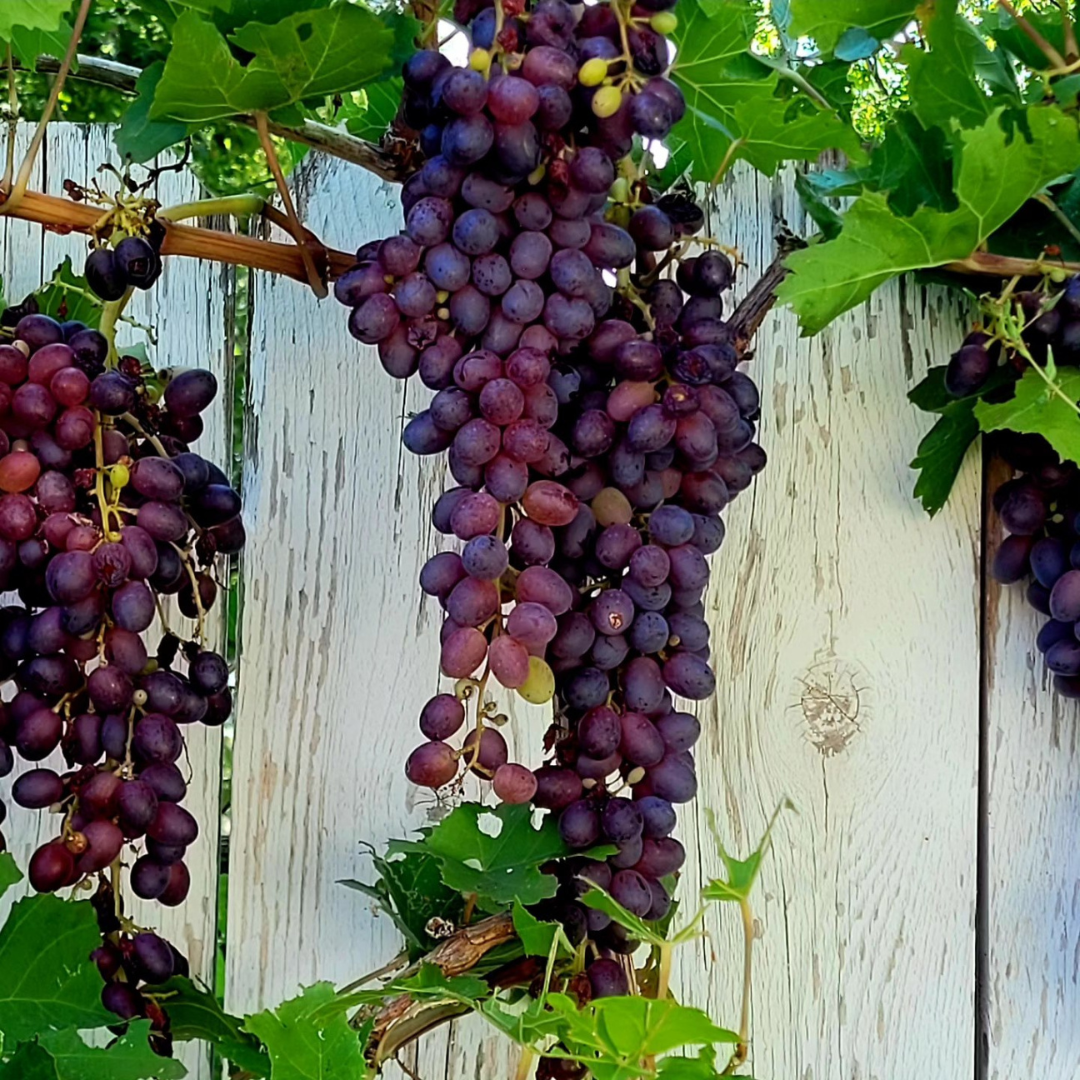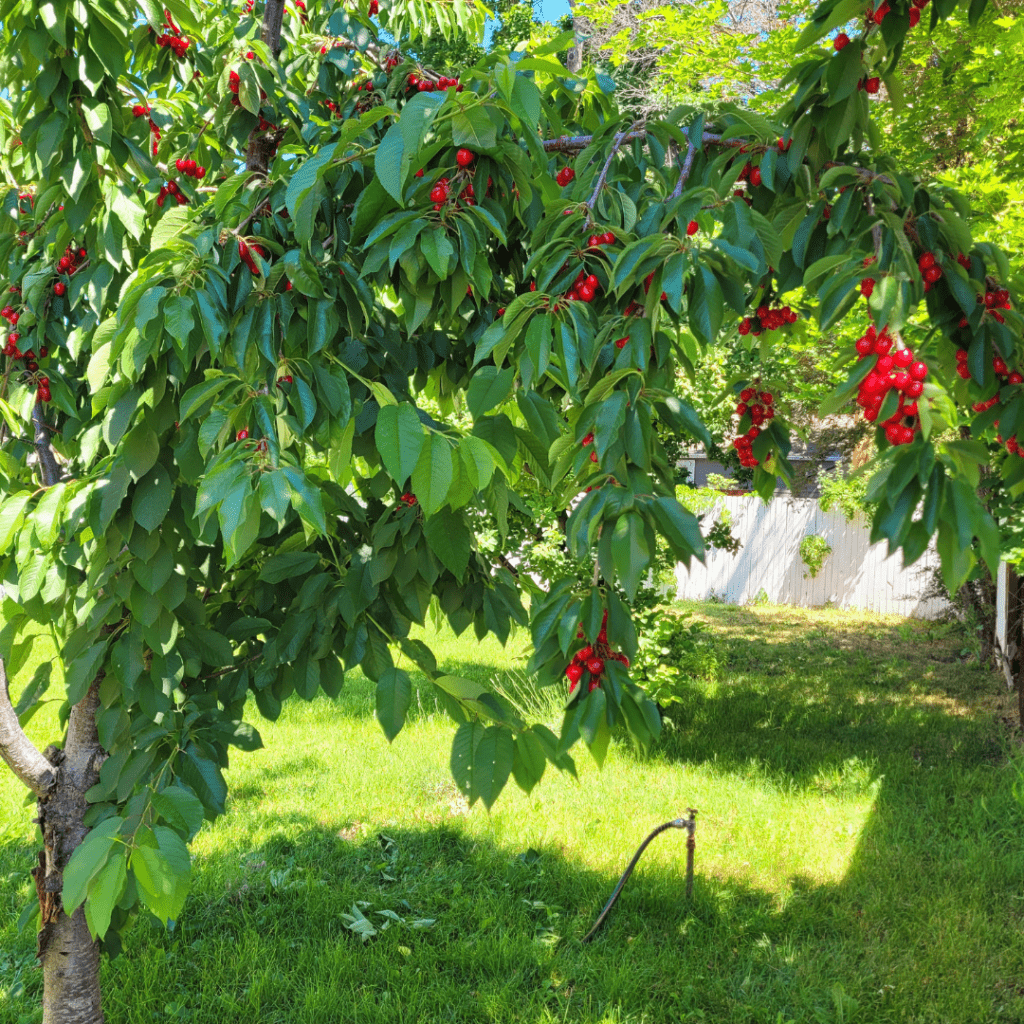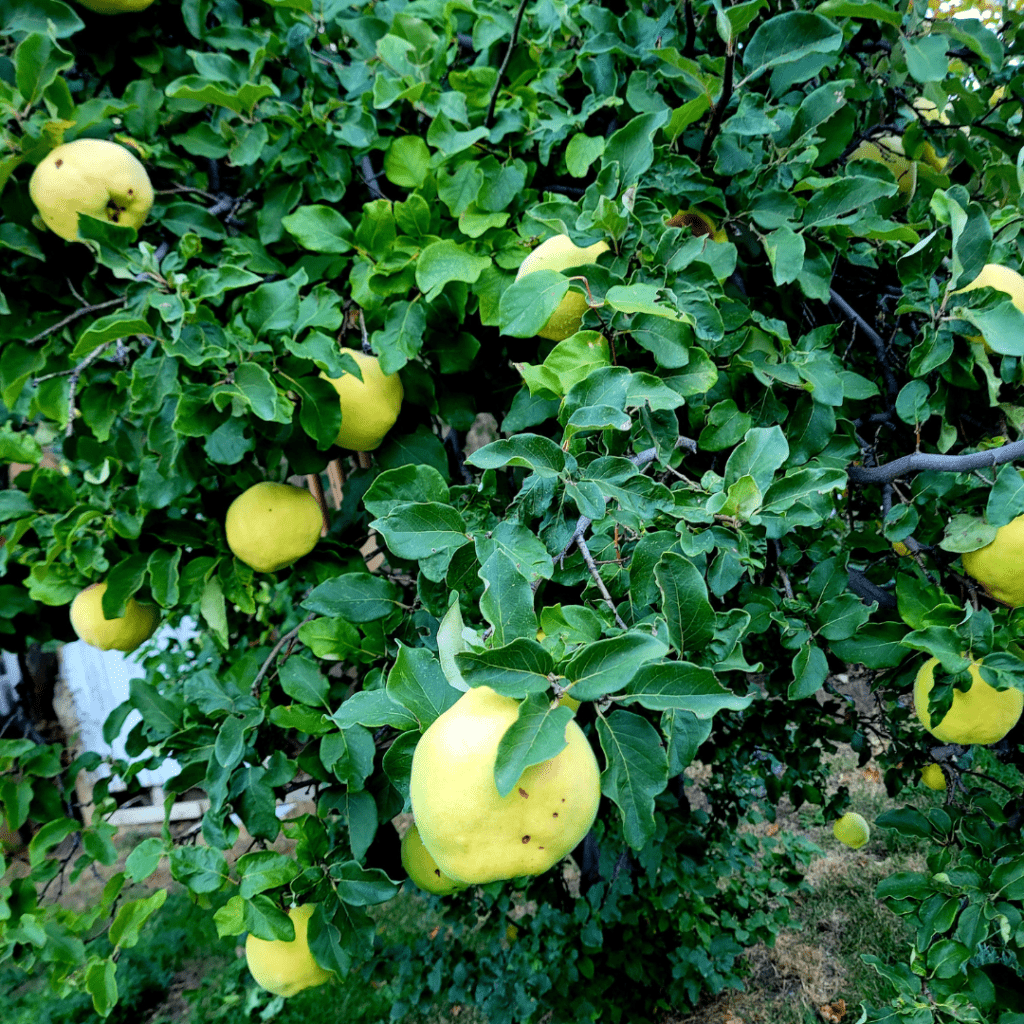Discover how to grow Concord grapes in your backyard with this easy-to-follow guide. Learn the best planting methods, soil requirements, pruning tips, and pest management to help your vines thrive and produce sweet, juicy grapes year after year. Perfect for beginners and experienced gardeners alike, growing Concord grapes at home means fresh fruit for snacking, juice, or homemade jams right from your own garden.
Have you ever dreamed of stepping out into your backyard and plucking sweet, juicy Concord grapes straight from the vine? There’s something magical about growing your own fruit, and Concord grapes are a perfect choice for both novice and experienced gardeners alike. These deep purple gems are not only delicious but also packed with health benefits, making them a fantastic addition to any homestead or garden.
Why Growing Concord Grapes Is So Rewarding
As someone who’s spent years cultivating my own little slice of paradise, I can tell you that there’s nothing quite like the satisfaction of nurturing your own grape vines. Whether you’re looking to make homemade jams, jellies, or even try your hand at winemaking, growing Concord grapes can be a rewarding and fruitful endeavor. Plus, the lush green foliage and twisting vines add a touch of rustic charm to any backyard.
In this post, I’ll explore everything you need to know about growing Concord grapes in your own backyard. From understanding these hardy vines to preparing your soil, planting, caring for your vines, and finally harvesting your bounty, I’ve got you covered. So, grab your gardening gloves, and let’s dig in – your journey to becoming a backyard grape grower starts here!
This is a pinnable post. Tap or hover over any image in this post to pin to your Pinterest Boards.

Understanding Concord Grapes
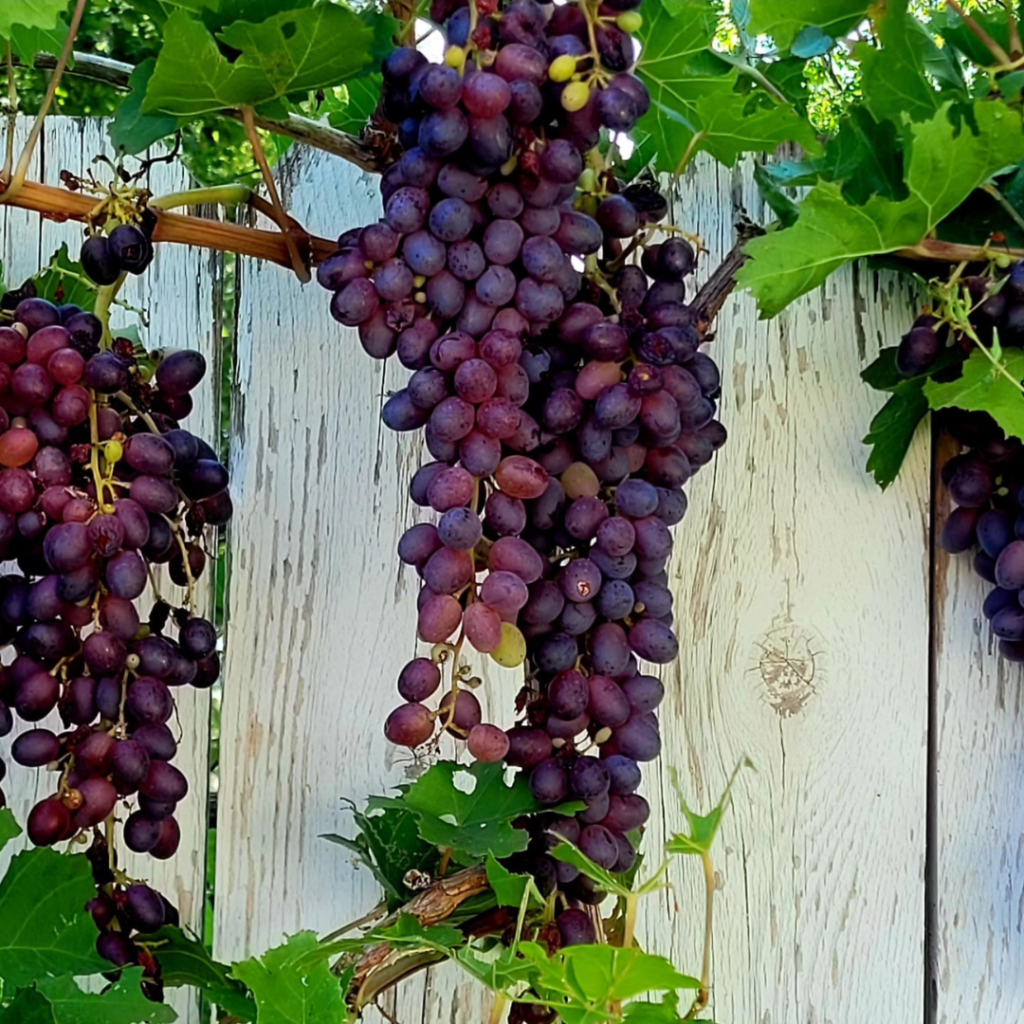
Concord grapes are a true American classic, and there’s something special about growing your own. As someone who’s spent years cultivating various crops in my backyard, I can tell you that these purple beauties are not only delicious but also rewarding to grow. Let’s discuss all about Concord grapes and explore why they might be the perfect addition to your homestead.
What Are Concord Grapes?
Concord grapes are a cultivar of the North American grape species Vitis labrusca. Named after Concord, Massachusetts, where they were first developed in 1849, these grapes are known for their deep purple color and distinctive sweet-tart flavor. They’re the grape most commonly used for grape juice, jelly, and that classic “grape” flavor we all know and love.
What sets Concord grapes apart is their thick, slip-skin that separates easily from the pulp. This unique characteristic makes them ideal for processing into various products. The grapes grow in clusters and have large seeds, which can be a bit of a challenge when eating them fresh, but don’t let that deter you!
Why Grow Concord Grapes In Your Backyard?
There are numerous reasons to consider adding Concord grapes to your backyard garden:
- Self-sufficiency: Growing your own grapes means you’ll have a steady supply of fresh eating, juicing, and preserving.
- Cost-effective: Once established, grape vines can produce grapes for decades, providing you with free fruit year after year.
- Versatility: From homemade jams and jellies to wine and vinegar, the possibilities are endless.
- Aesthetic appeal: Grape vines can be trained over arbors or along fences, adding beauty to your landscape.
- Health benefits: Concord grapes are packed with antioxidants and other nutrients.
As someone who values self-sufficiency and homegrown goodness, I can attest to the satisfaction of stepping outside to harvest my own grapes. There’s nothing quite like the burst of flavor from a freshly picked Concord grape!
Climate and Growing Conditions for Concord Grapes
Concord grapes are surprisingly adaptable, but they do have some specific requirements to thrive:
- Climate: These grapes are cold-hardy and can withstand temperatures as low as -20°F (-29°C). They actually need a period of winter dormancy to produce fruit, making them well-suited for USDA hardiness zones 5-8.
- Sunlight: Concord grapes love the sun! They need at least 6-8 hours of direct sunlight daily for optimal growth and fruit production.
- Soil: Well-draining soil is crucial. Grapes don’t like “wet feet,” so avoid areas where water tends to pool. A slightly acidic to neutral pH (6.0-7.0) is ideal.
- Space: While you can grow grapes in containers, they really thrive when given room to spread. A single vine can stretch 15-20 feet, so plan accordingly!
- Support: Grapes need a strong support system. Trellises, arbors, or sturdy fences work well.
- Air circulation: Good airflow around the vines helps prevent fungal diseases, a common issue with grapes.
In my experience, Concord grapes are fairly forgiving once established. They’ve weathered droughts and cold snaps in my garden, bouncing back with vigor each spring. With proper care and attention, you’ll be amazed at how prolific these vines can be.
Remember, growing Concord grapes is a long-term investment in your backyard homestead. It may take a few years for your vines to start producing, but once they do, you’ll have a bountiful harvest for years to come. So why not give it a try?
Preparing Your Backyard for Concord Grape Vines

Preparing your backyard for Concord grape vines is an exciting step towards growing your own delicious fruit. With a little planning and effort, you’ll be well on your way to enjoying homegrown grapes in no time. Let’s discuss the key aspects of setting up your backyard for these hardy vines.
Choosing the Right Location
When it comes to Concord grapes, location is everything. These vines thrive in full sun, so look for a spot in your yard that receives at least 6-8 hours of direct sunlight daily. Ideally, choose an area with good air circulation to help prevent fungal diseases.
Consider the following when selecting your grape-growing spot:
- Protection from strong winds.
- Proximity to a water source for easy irrigation.
- Adequate space for the vines to spread (they can grow up to 20 feet long!).
Remember, grapes are long-lived plants, so pick a location where they can grow undisturbed for years to come.
Soil Preparation and Testing
Concord grapes aren’t too picky about soil, but they do prefer well-draining, slightly acidic soil with a pH between 5.5 and 6.5. Before planting, it’s crucial to test your soil to ensure it meets these requirements.
To prepare your soil:
- Remove any weeds or grass from the planting area.
- Loosen the soil to a depth of about 12 inches.
- Mix in organic matter like compost to improve drainage and nutrient content.
If your soil test reveals a pH imbalance, you can adjust it by adding lime to raise the pH or sulfur to lower it. Don’t skip this step – proper soil preparation will set the foundation for healthy, productive vines.
Setting Up a Trellis or Support System
Concord grape vines need strong support to grow and produce fruit effectively. A sturdy trellis or support system is essential for training the vines and maximizing your grape harvest.
Here are some options for grape support:
When building your support system, use materials that can withstand the weight of fully-grown vines laden with fruit. Cedar or pressure-treated wood posts work well, along with a heavy-gauge wire for the vines to climb on.
Install your trellis before planting the vines to avoid disturbing their roots later. Make sure it’s tall enough (at least 5-6 feet) and wide enough to accommodate the vines’ growth over the years.
As you set up your grape-growing area, think about how it fits into your overall garden plan. Grapes can be a beautiful addition to your backyard, providing both fruit and a natural shade structure. With proper preparation, you’ll be laying the groundwork for years of bountiful harvests.
Remember, growing grapes is a journey that requires patience and care. But with the right setup, you’ll be well on your way to enjoying the fruits of your labor. There’s nothing quite like plucking a ripe Concord grape off the vine you’ve nurtured yourself – it’s a true taste of self-sufficiency that’s hard to beat.
Planting Concord Grape Vines
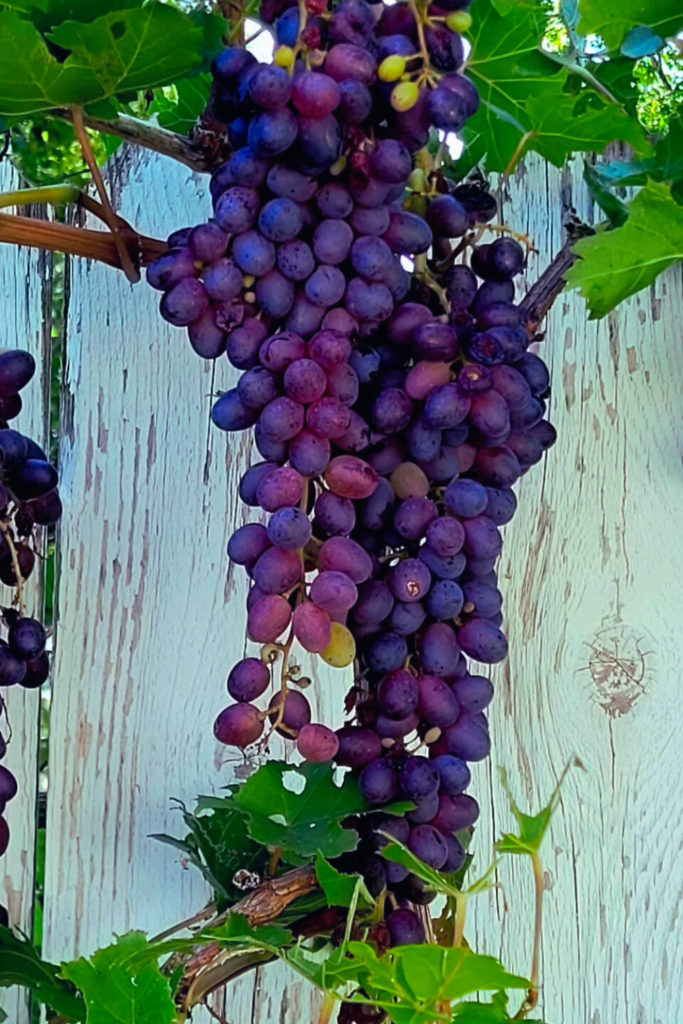
Growing your own Concord grapes can be a rewarding experience, and it all starts with proper planting. Let’s discuss the essential steps to get your grape vines off to a great start.
When to Plant Concord Grapes
Timing is crucial when it comes to planting Concord grapes. The best time to plant is in early spring, just as the soil begins to warm up. This gives the vines a full growing season to establish themselves before winter sets in. If you’re in a warmer climate, you can also plant in the fall, but be sure to provide extra protection for the young vines during their first winter.
Selecting Healthy Grape Vines
Choosing the right vines is key to a successful grape-growing venture. Look for one-year-old, bare-root vines from a reputable nursery. The vines should have a well-developed root system and at least three buds on the stem. Avoid any vines with signs of disease, damage, or mold. Remember, starting with healthy plants is half the battle won!
Step-by-Step Planting Process
- Prepare the soil: Concord grapes prefer well-draining, slightly acidic soil. Work some compost into the planting area to improve drainage and fertility.
- Dig the hole: Make it about 12 inches deep and wide enough to spread out the roots comfortably.
- Prune the roots: Trim any damaged or excessively long roots to encourage new growth.
- Place the vine: Set the plant in the hole, spreading the roots out. The graft union (if present) should be 1-2 inches above the soil line.
- Backfill: Gently fill in the hole with soil, firming it around the roots to eliminate air pockets.
- Water thoroughly: Give your newly planted vine a good soaking to help settle the soil.
- Mulch: Apply a layer of organic mulch around the base of the plant, keeping it away from the stem to prevent rot.
Spacing and Arrangement of Vines
Proper spacing is crucial for healthy grape vines. For Concord grapes, allow about 8 feet between plants in a row, with rows spaced 10 feet apart. This gives the vines plenty of room to grow and allows for good air circulation, which helps prevent disease.
When planning your grape arbor, consider the direction of sunlight. Orienting rows north to south ensures that both sides of the vine receive adequate sunlight throughout the day. If you’re planting along a fence or trellis, make sure it’s sturdy enough to support the weight of mature vines laden with fruit.
As you’re planting, it’s a good idea to install your support system at the same time. This could be a trellis, wire system, or arbor. Having the support in place from the beginning allows you to train the young vines as they grow, promoting good form and making future maintenance easier.
Remember, patience is key when growing grapes. It may take a few years before you see your first harvest, but with proper care and attention, you’ll soon be enjoying the sweet rewards of your labor. There’s nothing quite like plucking a ripe Concord grape from your own backyard vine – it’s a taste of self-sufficiency that’s hard to beat!
Caring for Your Concord Grape Vines
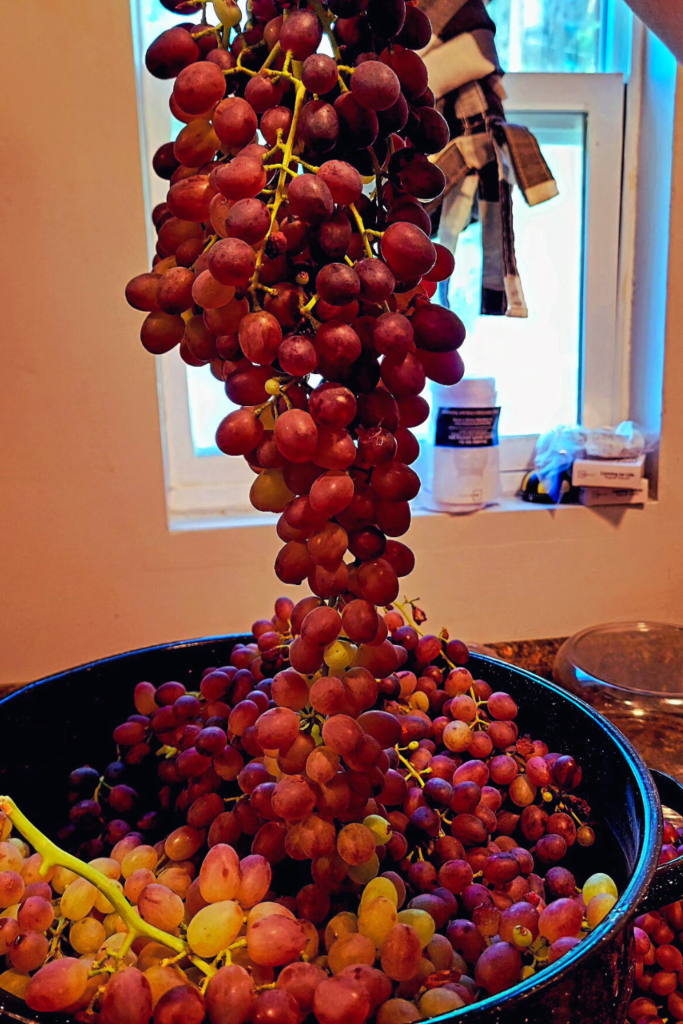
Caring for your Concord grape vines is essential for a bountiful harvest and healthy plants. As someone who’s tended to these hardy vines for years, I can tell you that with the right approach, you’ll be enjoying homemade grape jelly and fresh fruit in no time!
Watering Requirements
Concord grapes are relatively drought-tolerant, but consistent moisture is key for optimal growth. Water deeply once a week, providing about 1-2 inches of water. During hot, dry spells, you may need to increase watering frequency. I’ve found that mulching around the base of the vines helps retain moisture and reduce watering needs.
Fertilizing and Nutrient Management
Grape vines aren’t heavy feeders, but they do benefit from proper nutrition. In early spring, before new growth appears, apply a balanced fertilizer (10-10-10) around the base of the plant. As the growing season progresses, switch to a fertilizer higher in potassium and phosphorus to encourage fruit development. Remember, over-fertilizing can lead to excessive foliage growth at the expense of fruit production, so always follow package instructions.
Pruning Techniques for Optimal Growth
Pruning is crucial for maintaining healthy, productive vines. The best time to prune is in late winter or early spring before the buds break. Here’s a simple guide:
- Remove any dead, diseased, or damaged wood.
- Cut back last year’s growth, leaving 2-3 buds on each shoot.
- Maintain a central trunk with 4-6 main canes.
- Remove any suckers growing from the base of the plant.
Proper pruning ensures good air circulation, sunlight penetration, and easier harvesting. It may seem drastic at first, but trust me, your vines will thank you with a better yield.
Managing Pests and Diseases
Concord grapes are generally hardy, but they can still fall victim to various pests and diseases. Here are some common issues and how to address them:
- Japanese beetles: Handpick and drop in soapy water, or use organic insecticidal soap.
- Birds: Cover vines with netting as fruit ripens.
- Powdery mildew: Ensure good air circulation and avoid overhead watering. Apply fungicides if necessary.
- Black rot: Remove infected fruit and leaves promptly. Use fungicides preventatively in humid climates.
Regular inspection of your vines is key to catching and addressing issues early. I make it a habit to check my vines at least once a week during the growing season.
By following these care guidelines, you’ll be well on your way to growing healthy, productive Concord grape vines. Remember, gardening is as much about learning and adapting as it is about following rules. Don’t be afraid to experiment and find what works best in your specific environment. With a little patience and care, you’ll soon be enjoying the fruits of your labor – quite literally!
Harvesting and Enjoying Your Concord Grapes

After months of tender care and patient waiting, it’s finally time to reap the rewards of your Concord grape vine. There’s something truly special about plucking those plump, dusky-blue clusters right from your own backyard. Let’s discuss the exciting process of harvesting and enjoying your homegrown Concord grapes.
Determining Grape Ripeness
Knowing when to harvest your Concord grapes is crucial for optimal flavor and sweetness. Here are some telltale signs that your grapes are ready:
- Color: Fully ripe Concord grapes have a deep, almost black-blue color.
- Texture: The grapes should be firm but slightly soft when gently squeezed.
- Taste: Sample a few grapes from different clusters. They should be sweet with a balanced tartness.
- Aroma: Ripe grapes emit a sweet, fragrant scent.
Remember, not all grapes on a cluster will ripen at the same time. It’s better to wait until most grapes are ripe before harvesting the entire cluster.
Proper Harvesting Techniques
When it’s time to harvest, follow these steps for the best results:
- Use clean, sharp pruning shears or scissors to cut the grape clusters.
- Cut the stem about an inch above the cluster to avoid damaging the grapes.
- Handle the clusters gently to prevent bruising.
- Harvest on a dry day to reduce the risk of mold during storage.
Storage and Preservation Methods
Fresh Concord grapes can last up to two weeks when stored properly. Here are some storage tips:
- Refrigerate unwashed grapes in a perforated plastic bag.
- Remove any damaged grapes before storing them to prevent the spread of mold.
- For longer-term storage, consider freezing whole grapes or making juice or jelly.
Canning grape juice or jelly is a fantastic way to preserve your harvest for year-round enjoyment. There’s nothing quite like opening a jar of homemade grape jelly in the depths of winter to bring back memories of summer abundance.
Once your Concord grapes are thriving and ready to harvest, the fun doesn’t stop at picking them. You can turn your fresh grapes into homemade raisins using my easy oven-drying method, perfect for holiday baking or healthy snacks. I also love making homemade grape jam—it’s a classic way to preserve the sweet flavor of your backyard harvest and enjoy it year-round. Check out my step-by-step tutorials for both projects and make the most of your backyard orchard bounty!
Culinary Uses for Concord Grapes
Concord grapes are incredibly versatile in the kitchen. Here are some delicious ways to use your harvest:
- Fresh eating: Enjoy them straight off the vine for a burst of sweet-tart flavor.
- Juice: Press the grapes for a refreshing and nutritious drink.
- Jelly or jam: A classic use that captures the essence of Concord grapes.
- Pies and tarts: Try a traditional grape pie for a unique dessert experience.
- Winemaking: For the adventurous, try your hand at homemade Concord grape wine.
- Fruit leather: A healthy snack that kids and adults alike will love.
Don’t forget to save the seeds! Concord grape seeds can be roasted and used as a crunchy topping for salads or yogurt.
As you savor the fruits of your labor, take a moment to appreciate the journey from vine to table. There’s a deep satisfaction in growing your own food, and Concord grapes are a wonderful addition to any backyard garden.
Whether you’re spreading homemade grape jelly on warm, crusty bread or sipping on freshly pressed juice, you’ll taste the difference that comes from nurturing your own grapevines. So go ahead, kick off those shoes, and enjoy the simple pleasure of your homegrown Concord grapes – you’ve earned it!
Unlock the Secrets to a Fruit-Filled Backyard with Harvesting Paradise
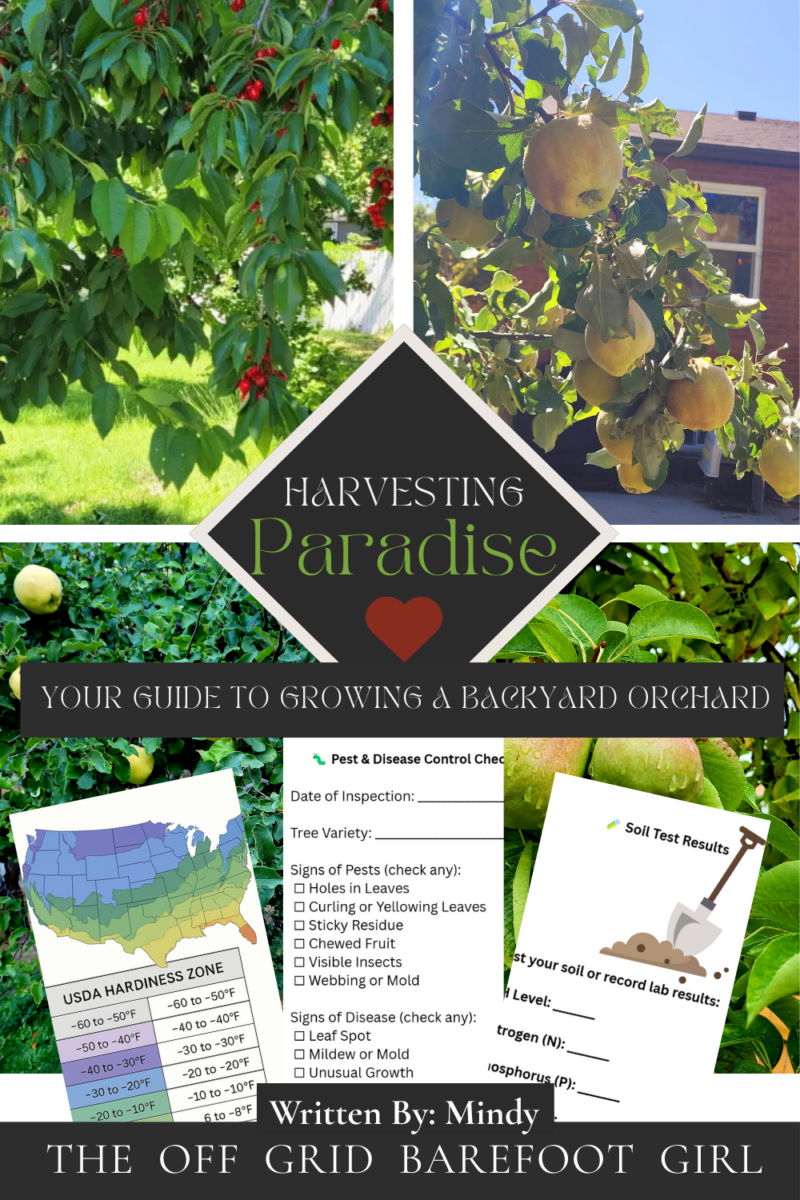
After years of hands-on experience growing my own orchard, I created Harvesting Paradise: Your Guide to Growing a Backyard Orchard to help you cultivate a thriving fruit garden with confidence and ease. This book is packed with practical tips, step-by-step guidance, and honest advice to help you grow apples, cherries, pears, and more—whether you’re a beginner or seasoned gardener. Ready to turn your outdoor space into a fruitful haven? Grab your copy of Harvesting Paradise and start your journey toward homegrown abundance today!
Get your copy!
Harvesting Paradise: Your Guide to Growing a Backyard Orchard
Conclusion
Growing Concord grapes in your backyard is a rewarding journey that combines patience, care, and a touch of gardening magic. We’ve explored the unique characteristics of these delicious grapes, learned how to prepare your backyard for their arrival, and discovered the best practices for planting and nurturing your vines. With proper care and attention, you’ll soon be enjoying bountiful harvests of sweet, juicy Concord grapes right from your own backyard.
Remember, success with Concord grapes takes time, but the results are well worth the effort. Whether you’re planning to make homemade jams, jellies, or simply enjoy fresh grapes off the vine, growing your own Concord grapes is a fantastic way to embrace self-sufficiency and connect with nature. So why not give it a try?
Roll up your sleeves, get your hands in the soil, and start your grape-growing adventure today. Before you know it, you’ll be savoring the fruits of your labor and sharing the abundance with friends and family.
Resources: Here are some helpful resources for further information.
- How to Grow Grapes: The Complete Guide – By The Old Farmer’s Almanac
- The Married Vine: Growing Grapes on Trees – By The Survival Gardener
- Grapes Planting, Care, Pruning, and Harvesting Instructions – By Arbor Day Foundation

Frequently Asked Questions
1. When is the best time to plant Concord grapes?
Early spring is the best time to plant Concord grapes, after the last frost and when the soil is workable.
2. How much sunlight do Concord grapes need?
Concord grapes need full sun, at least 6-8 hours a day, to thrive and produce a healthy harvest.
3. How long does it take for Concord grapevines to produce fruit?
It typically takes 3-4 years for Concord grapevines to mature and start producing a full harvest of grapes.
4. Do Concord grapes need to be pruned?
Yes, pruning is essential for maintaining healthy vines and encouraging fruit production. Prune annually during late winter or early spring before new growth begins.
Summary
I hope I have inspired you to grow your own backyard orchard.
If you were encouraged by this post, I invite you to check out my FREE Printables Page for fun free printables, planners, and charts.
ENTER MY FREE Printables Page HERE
I invite you to check out some more of my posts!
How to Start a Backyard Orchard: A Beginner’s Guide
All About Cherry Plum Trees: Ultimate Guide
How Persimmon Fruit Trees Can Change Your Life! Unbelievable!
How to Design Your Backyard Orchard for Maximum Yield
How to Grow a Sustainable Backyard Orchard
Surprising Benefits of Growing Garlic Around Your Fruit Trees
How to Can a Year’s Supply of Quince Jam
Pears: All About Pear Trees: Ultimate Guide
Cherries: All About Cherry Trees: Ultimate Guide
Quince: All About Quince Trees: Ultimate Guide
Apples: All About Apple Trees: Ultimate Guide
How to Grow a Productive Perennial Raspberry Patch
Why You Need to Start Micro-Orcharding in Your Backyard
How to Grow a Productive Perennial Strawberry Patch
Blessings,
The Off Grid Barefoot Girl

